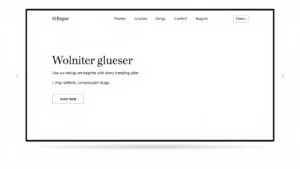As technology continues to evolve, web design is also undergoing significant transformations. One of the most notable trends is the shift towards minimalism, where clean lines and simple layouts are favored over cluttered designs. Additionally, the integration of artificial intelligence is becoming more prevalent, allowing for personalized user experiences that adapt to individual preferences. These trends not only enhance aesthetics but also improve functionality, making websites more user-friendly.
Another exciting development in web design is the rise of responsive design, which ensures that websites look great on any device. With the increasing use of smartphones and tablets, it’s essential for businesses to have a mobile-friendly presence. This trend is complemented by the use of dynamic content, which allows websites to change based on user interactions, creating a more engaging experience. As we move forward, embracing these trends will be crucial for staying competitive in the digital landscape.
Finally, sustainability is becoming a key consideration in web design. Designers are now focusing on creating eco-friendly websites that minimize energy consumption and reduce carbon footprints. This shift not only appeals to environmentally conscious consumers but also sets a positive example for the industry. By prioritizing sustainability, web designers can contribute to a healthier planet while delivering exceptional digital experiences.




